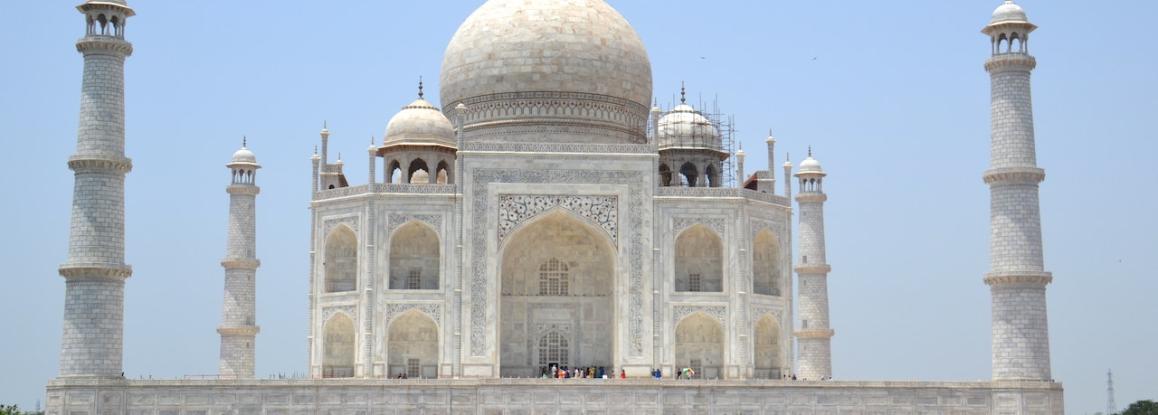We met Amit Chopra, Images Group publisher of Shoes & Accessories and Head of the India Delegation at Expo Riva Schuh, to better understand how the Indian footwear and leather goods market is changing in the Post Covid and online trade Era.
India: a country of large dimensions and with strong socio-cultural differences in it, differences that are also reflected in the lifestyle and consumption of its inhabitants. But also a country in transformation, increasingly part of a globalised and
digitised world: we spoke about this with Amit Chopra, Images Group editor of Shoes & Accessories, a keen observer and expert on the country and its fashion accessories sector.
You run one of India's leading footwear magazines. What are the main changes you have observed in retail?
“Over the last decade and a half, we have noticed that consumers in India have become more and more fashion conscious, increasingly investing in buying branded clothing and fashion accessories. Television, and increasingly social media and cinema,
make consumers aware of international fashion and retail trends, as well as brand value and shopping experience. According to Boston Council Group, e-commerce sales in India will reach USD 100 billion by 2026. At the beginning of the new millennium,
major international brands – especially sports brands like Niki, Adidas and New Balance – laid a solid basis in India, and more recently we have observed the rise of fast fashion brands like Zara, H&M, Massimo Dutti etc.. After these, it has been
the turn of brands like ASICS, Melissa Shoes, Toms, Steve Madden, Skechers, Aldo etc., which have strengthened their presence in the country. In general, consumers are also increasingly turning towards casual and sporty fashion, partly because they
are very interested in sports and physical well-being. This is an important trend for brands to consider”.
What has been the impact of online retail on the Indian footwear market?
“While it is true that online retail is getting stronger and is expected to grow over the next two years to about 25 per cent of the total (it was 5 per cent in 2015), it is also true that e-commerce currently accounts for only about 16 per cent of
brands' total footwear sales. There is therefore no real competition between online and offline sales at the moment, as the latter only account for a very small share, but online shopping only represents an alternative channel for consumers to the
physical shop, and that mainly concerns the big international brands, which have mostly focused on penetrating the Indian market online only. I myself, when I wanted to buy a pair of trainers from a well-known American brand, could only buy them online
because I could not find them in the shop”.
What are the main differences between the two big regions of the country, the north and the south?
“India is a very big country, with a vertical and horizontal extension of about two thousand kilometres, and for this reason each region is very different from the others. Brands that want to penetrate the Indian market should, therefore, have a local
approach, considering each region as a country in itself. In the west of India, for instance, we have a metropolis like Mumbai, which is the financial capital of India: here the per capita income is higher than in the rest of the country, and there
is the highest propensity to buy valuable and durable products. In the north of India, on the other hand, we have New Delhi, which is the most important city from a cultural and political point of view and comes after Mumbai in terms of per capita
income: here the consumer is more fashion-oriented. Mumbay and New Delhi together have a significantly higher consumer orientation than the East and South. Over the last 20 years, the greatest growth in consumption in value terms has been in the north
of the country, about 30%, while the south and west absorb about 25% and the east only 15-18%”.
Let's talk about sustainability: is it a problem for the Indian consumer and, consequently, for retailers and manufacturers? Have you noticed any change in their outlook and approach?
"New research by Bain & Company finds that 60 per cent of Indian consumers are willing to spend more on sustainable products, but the high price and lack of sustainable options currently hinder their purchase. Moreover, Indians are an emotional
people: if the Indian consumer is convinced that the product is made organically and sustainably, they will buy it. Brands are constantly looking for added value to offer the consumer and sustainable products are the area that offers the greatest
opportunities, because these needs are already there. In terms of governance, India has mandated the 1,000 listed companies to provide climate reporting from 2023. EZOK, a fast-moving Indian brand, produces REACH (an EU regulation) compliant products.
All major brands in India adhere to sustainability standards, e.g. Bata, Woodland, Red Tape, ID, HI bags and Da Milan. Although there is still a long way to go, it should be remembered that 'Even the sun is weak when it rises, but gains strength and
courage as the day goes by'.
Redazione Fotoshoe Magazine

